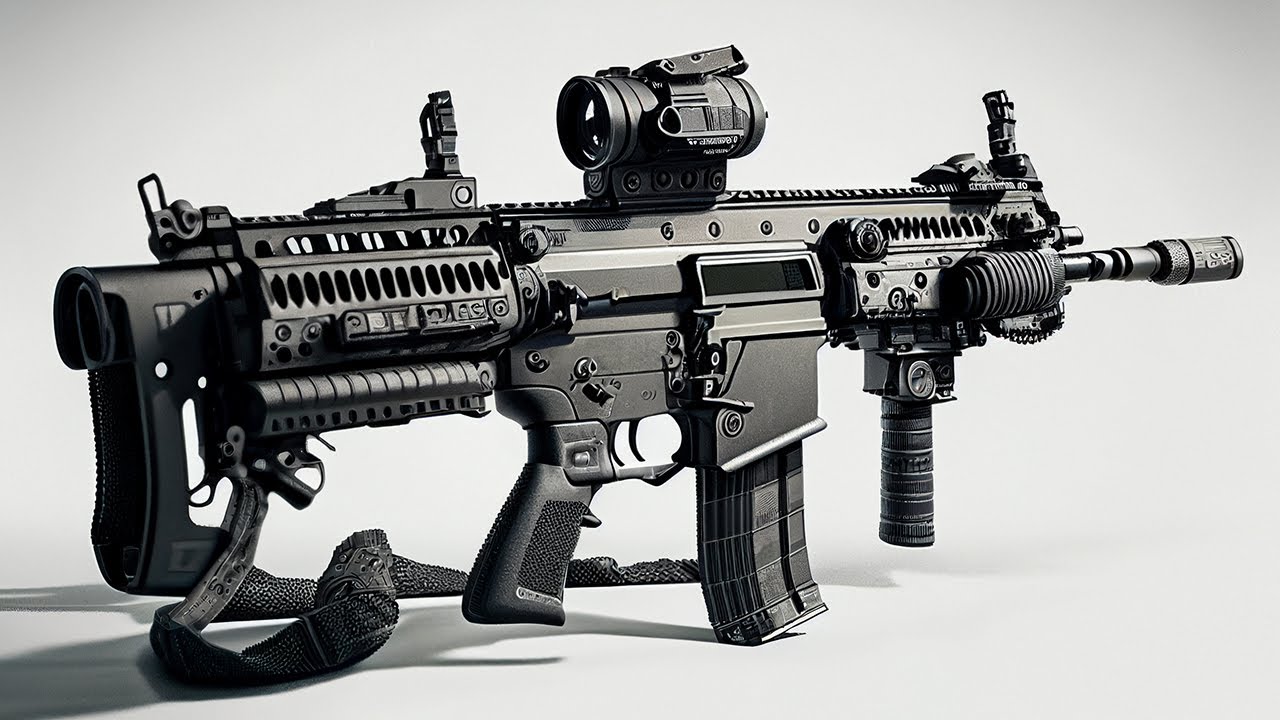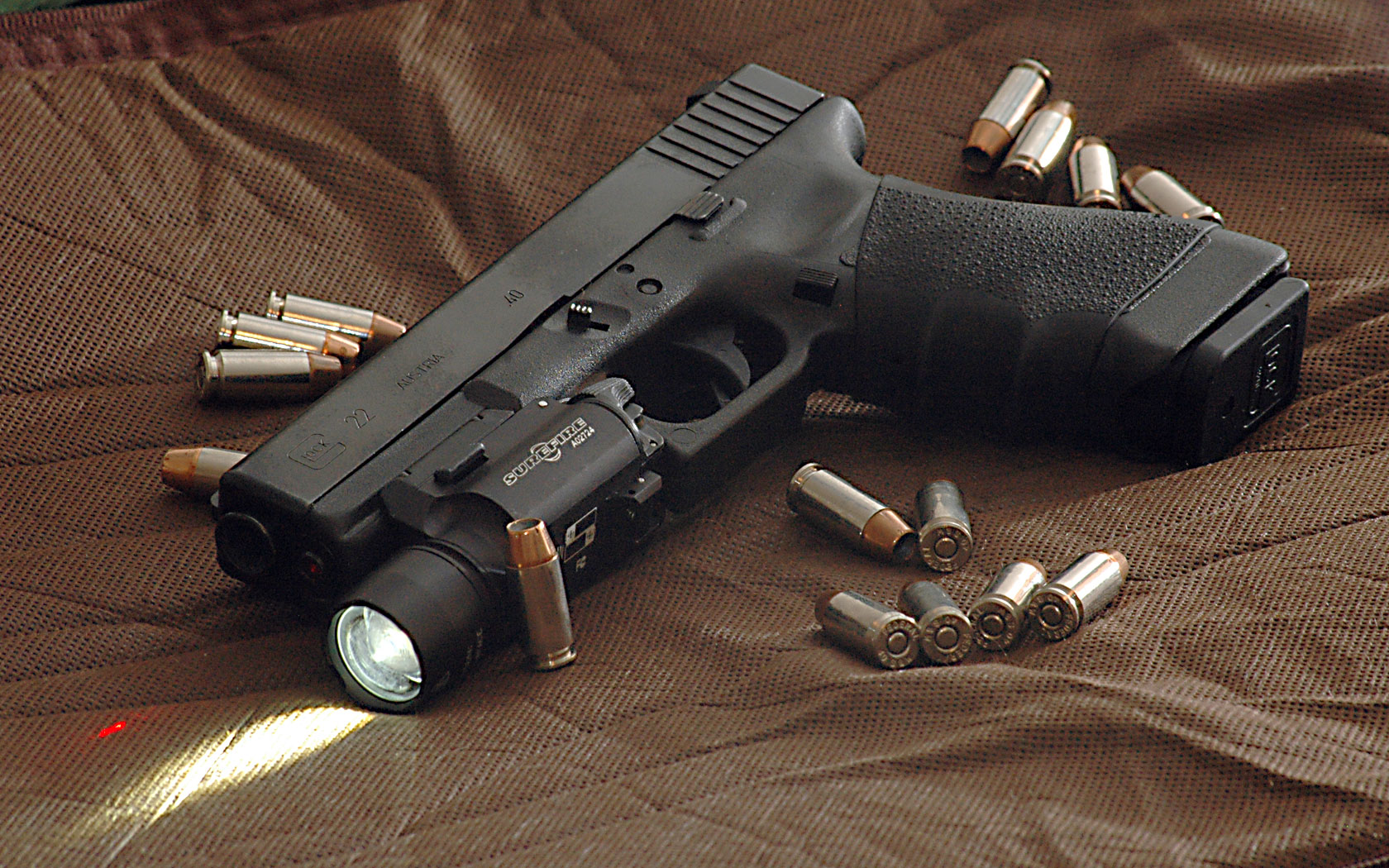Assault rifles are one of the most significant and widely used categories of firearms, known for their versatility, power, and rapid-fire capabilities. These rifles are designed for military, law enforcement, and, in some cases, civilian use. Combining the accuracy of a rifle with the firepower of a machine gun, assault rifles have revolutionized modern warfare. In this article, we will explore the history, mechanics, characteristics, uses, and controversies surrounding assault rifles.
1. What is an Assault Rifle?
An assault rifle is a selective-fire, magazine-fed, gas-operated firearm that is chambered for an intermediate cartridge. The key defining feature of an assault rifle is its ability to switch between semi-automatic (one shot per trigger pull) and fully automatic or burst fire modes (continuous fire as long as the trigger is held). Assault rifles are generally designed to be lightweight, portable, and highly effective in both close-quarters combat and at moderate distances. They are capable of firing intermediate cartridges that offer a balance of power and range, typically between the size of a pistol round and a full-sized rifle round.
The classic examples of assault rifles include the AK-47, M16, M4 Carbine, and FN SCAR.
2. History of Assault Rifles
The evolution of the assault rifle can be traced back to the early 20th century, though it gained prominence in the 1940s during World War II.
- World War I and Interwar Period: The roots of the assault rifle can be found in the development of select-fire rifles during and after World War I. During the interwar period, military thinkers began to recognize the need for a weapon that could provide the firepower of a machine gun but with greater portability and maneuverability. The concept of a “storm rifle” was born during this time.
- World War II: The first true assault rifle, the StG 44 (Sturmgewehr 44), was developed by Nazi Germany during World War II. Chambered in 7.92x33mm Kurz, it featured a selective-fire mechanism and was designed for close combat. The StG 44 was influential in the development of future assault rifles, serving as a blueprint for many postwar designs.
- Post-WWII Developments: After World War II, assault rifles became more standardized, particularly with the development of the AK-47 by the Soviet Union in the late 1940s. The AK-47, chambered in 7.62x39mm, became one of the most widely used rifles in history, known for its durability, simplicity, and effectiveness in combat. It would later be followed by the M16 and M4 Carbine used by the U.S. military, which featured lighter cartridges and a focus on accuracy and modularity.
- Modern Developments: Today, assault rifles continue to evolve, with modern variants like the FN SCAR and HK416 offering improvements in ergonomics, modularity, and accuracy. Many militaries around the world have adopted new variants of assault rifles that are lighter, more accurate, and more adaptable to various mission needs.
3. Key Features of Assault Rifles
Several characteristics define the assault rifle, setting it apart from other types of firearms such as battle rifles, carbines, and submachine guns:
- Selective Fire: The hallmark feature of an assault rifle is its ability to fire in multiple modes: semi-automatic (one shot per trigger pull), fully automatic (continuous fire), or burst fire (a short burst of shots per trigger pull). This flexibility allows the user to adapt to different combat situations.
- Intermediate Caliber: Assault rifles are typically chambered for intermediate cartridges, which are less powerful than full-sized rifle rounds but more powerful than pistol rounds. The most common intermediate cartridges include:
- 5.56x45mm NATO: Used in rifles like the M16, M4, and Steyr AUG.
- 7.62x39mm: Used in the AK-47 and SKS.
- 5.45x39mm: Used in the Russian AK-74.
Intermediate cartridges offer a balance of range, accuracy, and stopping power. They are suitable for both close combat and engagements at medium ranges (200 to 500 meters), making them versatile on the battlefield.
- Magazine Feeding: Assault rifles are typically fed from detachable magazines that hold between 20 and 40 rounds, though some rifles use larger drum magazines. The use of magazines allows for quicker reloading and a higher capacity than bolt-action rifles.
- Compact and Lightweight: Assault rifles are designed to be lighter and more maneuverable than traditional battle rifles. This compactness allows soldiers to carry more ammunition and operate in tight spaces, such as urban environments or dense forests.
- Gas-Operated Action: Most modern assault rifles use a gas-operated action. The gases from a fired round are diverted into a gas tube, which operates the rifle’s action and ejects the spent cartridge. This system allows for faster cycling of the rifle, making it capable of fully automatic or burst fire.
- Accuracy: While assault rifles are designed for rapid fire, they are also built for precision. They generally feature rifled barrels and adjustable sights, allowing users to engage targets at medium ranges with reasonable accuracy.
4. Popular Assault Rifles
Several assault rifles have become iconic due to their use in military and law enforcement operations. Some of the most famous and widely recognized include:
- AK-47: Perhaps the most famous assault rifle in history, the AK-47 (and its variants) is known for its simplicity, reliability, and durability in harsh conditions. Designed by Mikhail Kalashnikov and adopted by the Soviet Union in 1949, the AK-47 has been used by military forces, insurgents, and paramilitary groups around the world.
- M16: Developed in the 1960s and adopted by the U.S. military during the Vietnam War, the M16 is chambered in 5.56x45mm NATO and is known for its accuracy, lightweight design, and ability to fire in both semi-automatic and fully automatic modes. The M16 and its derivatives, like the M4 Carbine, are still in service with the U.S. military today.
- FN SCAR: The FN SCAR (Special Operations Forces Combat Assault Rifle) is a modern assault rifle designed for military special forces. It is known for its modularity, accuracy, and adaptability, with versions chambered in both 5.56x45mm NATO and 7.62x51mm NATO.
- Steyr AUG: The Steyr AUG is a bullpup-style assault rifle designed in Austria. The bullpup configuration places the action and magazine behind the trigger, making the rifle more compact without sacrificing barrel length. The AUG is known for its accuracy, modularity, and futuristic design.
- G36: The G36 is a German-made assault rifle that has been widely used by military forces and law enforcement agencies. It is known for its reliability, lightweight polymer construction, and ease of use.
5. Uses of Assault Rifles
Assault rifles are primarily used by military and law enforcement agencies, but their versatility and firepower also make them suitable for a variety of other applications.
- Military: The primary use of assault rifles is in military combat, where their rapid rate of fire, accuracy, and versatility make them effective in both offensive and defensive roles. Assault rifles are the standard-issue weapons for soldiers, special forces, and infantry units.
- Law Enforcement: Some law enforcement agencies use assault rifles for tactical operations, such as hostage rescues, counter-terrorism, and urban warfare. While police forces generally prefer semi-automatic carbines, select agencies may also deploy fully automatic or burst-fire assault rifles for high-risk operations.
- Civilian Use: In some countries, civilian ownership of assault rifles is allowed under certain regulations. In the United States, rifles like the AR-15, a civilian variant of the M16, are popular among gun owners for hunting, self-defense, and recreational shooting. However, civilian ownership of military-style assault rifles is heavily regulated in many parts of the world.
6. Controversies Surrounding Assault Rifles
The use and ownership of assault rifles have been subjects of intense debate, particularly in the United States. Some of the key points of controversy include:
- Military-Style Weapons in Civilian Hands: Critics argue that assault rifles, particularly those capable of fully automatic fire, are too dangerous for civilian use and pose a threat to public safety. Proponents of gun rights, however, assert that responsible civilian ownership of these rifles is a constitutional right protected by the Second Amendment.
- Mass Shootings: Assault rifles have been used in several high-profile mass shootings, leading to calls for stricter regulation and bans on certain types of firearms. Advocates for gun control argue that assault rifles are disproportionately used in violent crimes, while proponents of gun rights argue that restrictions on these weapons would infringe upon the rights of law-abiding citizens.
- Global Proliferation: Assault rifles, particularly the AK-47 and its variants, are often used by insurgents, terrorists, and non-state actors in conflicts around the world. The proliferation of these weapons has contributed to ongoing instability and violence in certain regions, sparking international efforts to curb their spread.
7. Conclusion
Assault rifles have become one of the most influential and widely used categories of firearms in modern warfare. Their combination of power, portability, and versatility makes them essential tools for military forces, law enforcement agencies, and even civilians in certain regions. While their use in combat is generally accepted, the debate surrounding civilian ownership and the role of assault rifles in mass shootings continues to be a topic of significant controversy. As the evolution of assault rifles continues, their impact on global security, law enforcement, and firearms policy will remain a subject of ongoing discussion.



